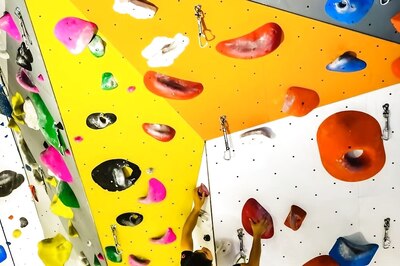
views
New Delhi: The screen size is one of the first things that a phone buyer looks for in a new phone. But what most lay users overlook is the technology behind the phone display. A mobile phone salesman will throw seemingly confusing terms such as TFT, LCD, AMOLED, OLED, SLCD at the customer. Here's a list of the different types of mobile displays and an explanation of the technology behind them.
Read on to know your mobile phone display better.
TFT LCD Display: Thin film transistor liquid crystal display (TFT LCD) is a variant of liquid crystal display (LCD). It uses thin-film transistor (TFT) technology to enhance image quality. It is the most common display technology used in mobile phones. It offers better image quality and higher resolutions as compared to earlier generation LCD displays. The only limitations are narrow viewing angles and poor visibility in direct light or sunlight. Further, large TFT displays consume more power and hence, are not battery-friendly. As this display technology is cheaper to manufacture, these are most commonly found on budget phones, feature phones and low-end smartphones.
IPS LCD: IPS (in-plane switching) LCD offers better display quality than normal TFT LCD display. It offers wider viewing angles and consumes less power, which in turn gives a much improved battery life. This technology is costlier than normal TFT LCD and hence, is found only on high-end smartphones. Apple uses a high resolution (640x960 pixels) version of IPS LCD in its iPhone 4, which is also called Retina Display because of its excellent picture quality.
In addition, LG's new Optimus LTE has a 4.5–inch True HD IPS display, developed in close collaboration with sister company LG Display, offers advanced resolution, brightness and clarity and shows colours in their most natural tones, as they were meant to be seen.
Super LCD (SLCD): It is an upgradade of the erstwhile LCD technology. While both display technologies are efficient with colours and brightness, SLCD scores over AMOLED in very sunny conditions. SLCD gives warmer colour tones and has better colour definition than AMOLED (described below) display technology.
OLED Display: OLED (Organic Light Emitting Diode) display technology is much better than LCD display technology because of its excellent colour reproduction, faster response times, wider viewing angles, higher brightness and extremely light weight designs.
AMOLED Display: There is no substantial difference between the two - OLED AND AMOLED (Active-Matrix Organic Light-Emitting Diode). Active Matrix, which is a method for controlling individual pixels. AMOLED display technology is a type of OLED display for mobiles and is rapidly gaining popularity in high end smartphone segment. AMOLED screens include all the attributes of an OLED display like excellent colour reproduction, faster response times, wider viewing angles, higher brightness and extremely light weight designs. However, in terms of vibrancy and brilliance, AMOLED beats SLCD display technology. There are many high-end phones using this technolgoy like Nokia N8. If you can shell out money, it is suggested to opt for AMOLED display over TFT LCD.
Super AMOLED Display: Super AMOLED display technology is an advanced version of AMOLED display. Developed by Samsung, it is said to be the thinnest display technology in the market. Super AMOLED display is much more responsive than an AMOLED display. Samsung top-of-the-line Galaxy SII comes engineered with Super AMOLED display technology.
Retina Display: Retina Display is a term used by Apple for its high resolution (640x960 pixels) IPS LCD display technology used in iPhone4. The company calls it the Retina display because its pixels cannot be individually identified by a human eye, thereby making the display super sharp, text more crisp and pictures more clear.
Most commonly used touchscreen types:
Resistive: Resistive touchscreens possesses two layers of conductive material with a very small gap between them, which acts as a resistance. When the resistive touchscreen is touched with a finger (or a stylus) the two layers meet at the point of touch and thus makes a circuit there. Resistive touchscreens are not as responsive as capacitive touchscreens and hence, often require a stylus. This technology is cheaper to make and is used only in low end phones.
Capacitive: Capacitive touchsceens are more responsive to human touch when compared to resistive touchsceens. Hence, the user experience for touch is much better. Capacitive touchsceens are used in high-end smartphones. A capacitive screen is smooth to operate as it just requires the presence of your finger, without any pressure.
In combination to all that has been described above, there is also Gorilla Glass which is now used in high-end phones. It is basically a glass shield with exceptional damage resistance that helps users protect mobile displays from scratches, drops, and bumps. Leading mobile phone manufacturers such as Motorola, Samsung and Nokia are now using Gorilla Glass to make their mobile displays more durable.




















Comments
0 comment